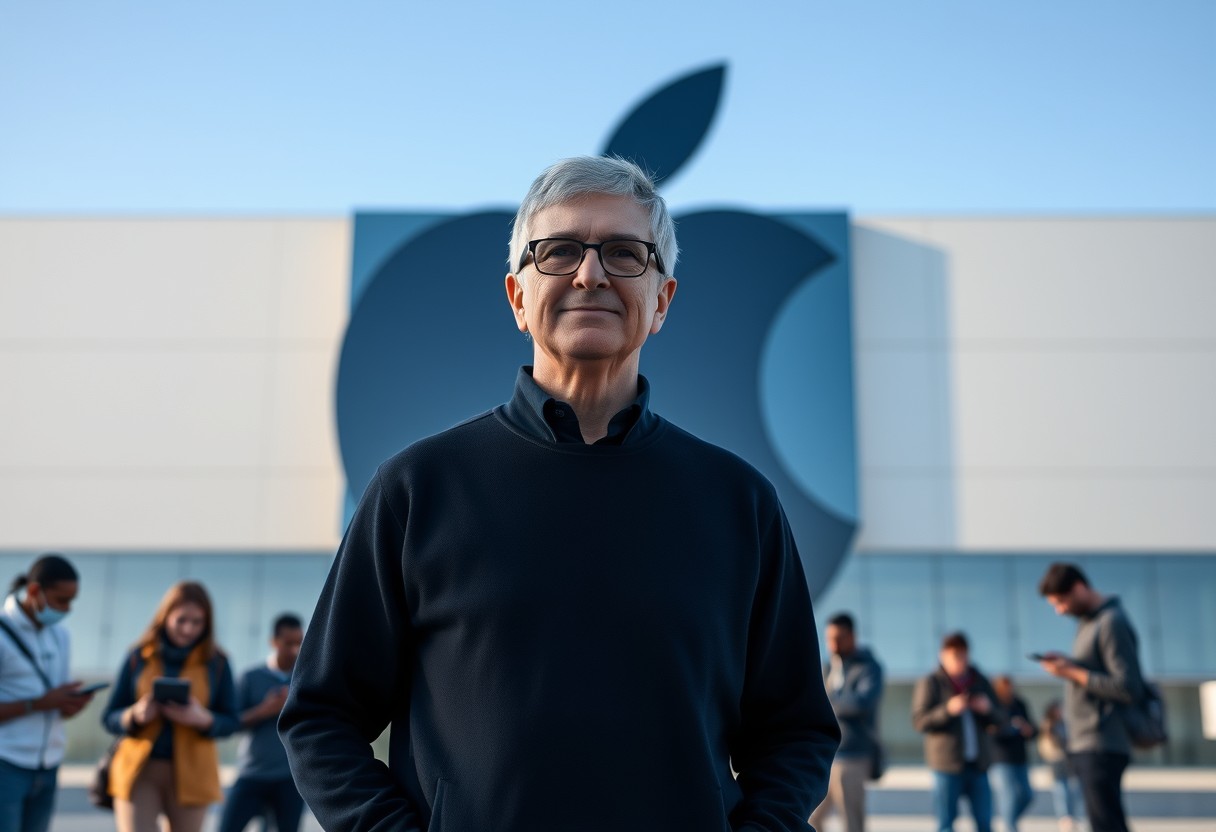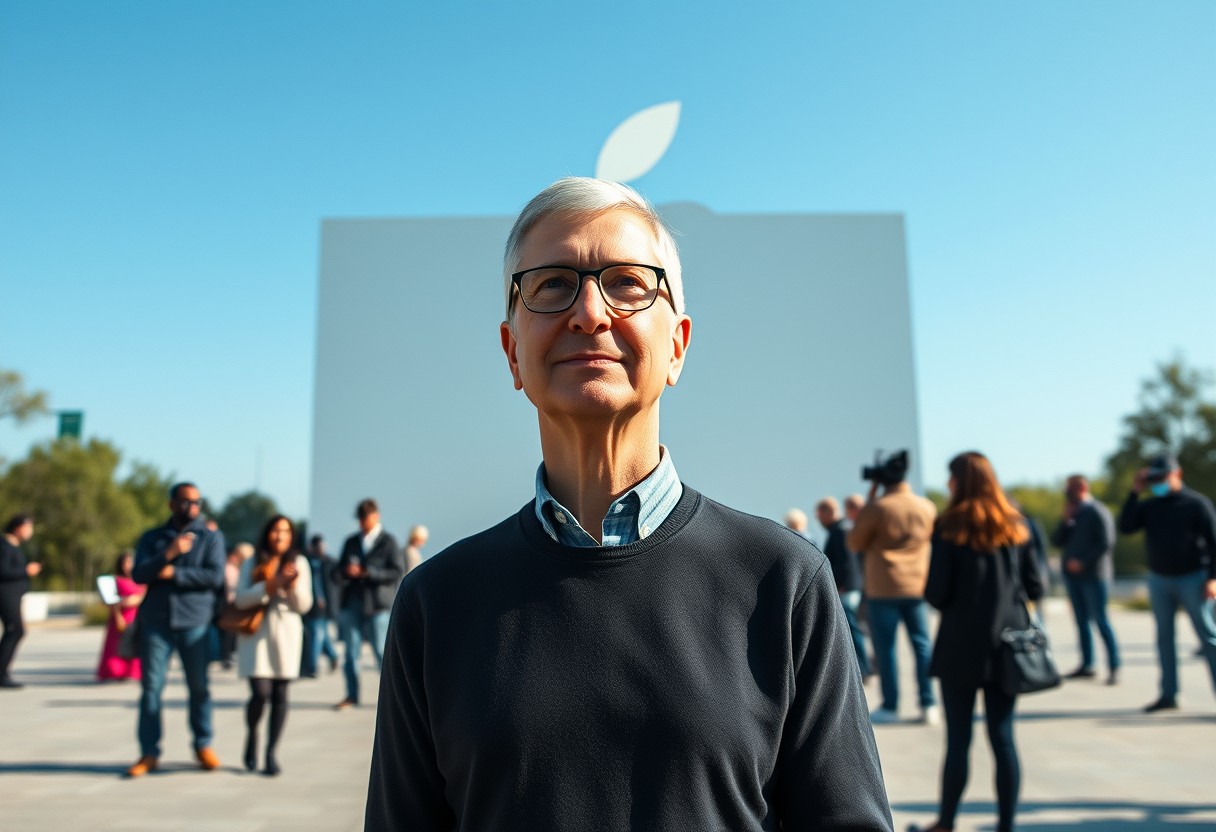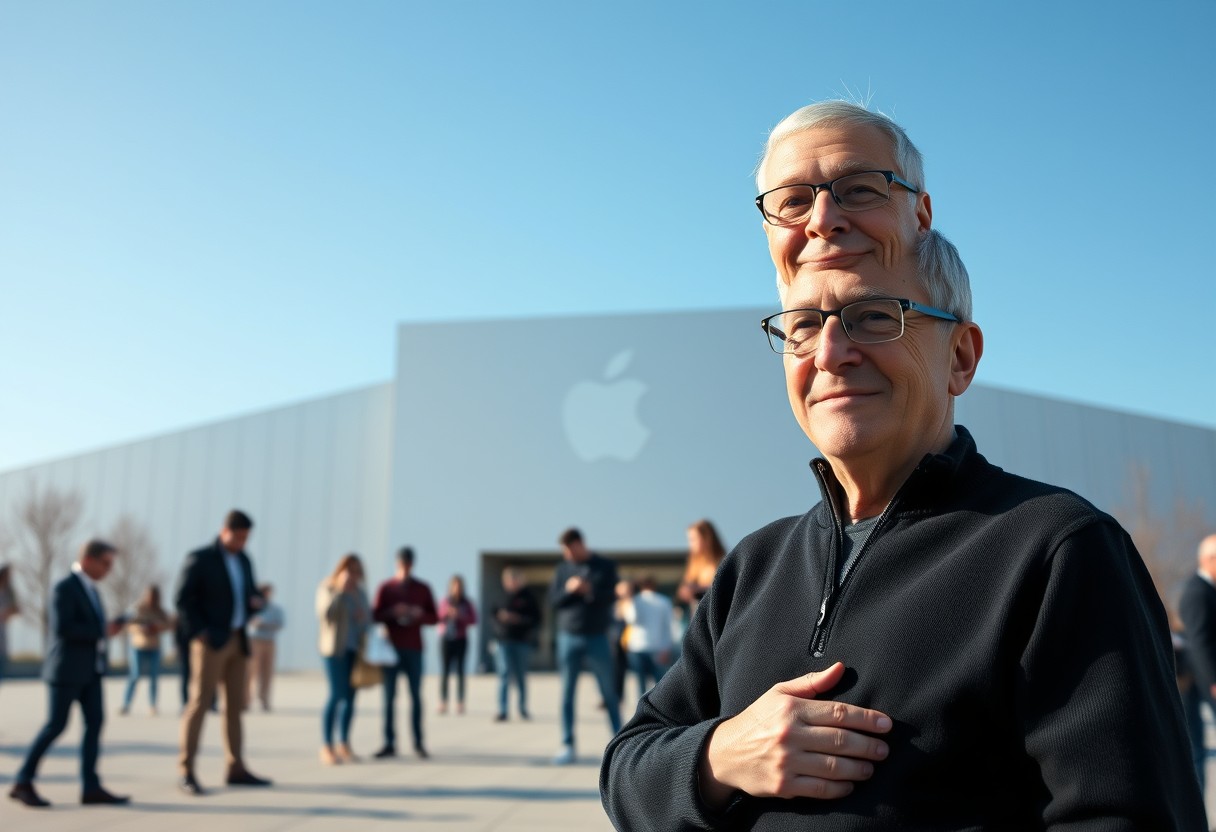With the passing of Steve Jobs, many wondered how Apple would navigate its future. Yet, under Tim Cook’s leadership, you have witnessed remarkable innovations and expansion. Cook’s focus on sustainability and services diversification has not only increased revenue but also strengthened Apple’s brand presence globally. Through strategic acquisitions and an emphasis on customer privacy, Tim Cook has positioned Apple as a leader in technology and ethics. By understanding Cook’s vision, you can appreciate how he has propelled Apple to new heights while honoring Jobs’ legacy.

Key Takeaways:
- Steady Leadership: Tim Cook provided a stable and consistent leadership style, which helped maintain Apple’s corporate culture during a significant transitional period.
- Product Diversification: Under Cook’s guidance, Apple expanded its product range, successfully introducing new categories such as wearables, services, and home technology.
- Supply Chain Innovation: Cook’s background in operations allowed Apple to optimize its supply chain, ensuring efficiency and responsiveness to market demands.
- Sustainability Focus: Tim Cook prioritized environmental initiatives, pushing Apple towards renewable energy practices and sustainable materials in product design.
- Global Expansion: Cook successfully led Apple into new international markets, increasing the company’s global footprint and customer base.
- Services Growth: The emphasis on services, such as Apple Music, iCloud, and Apple TV+, has significantly contributed to recurring revenue streams, diversifying Apple’s income.
- Inclusive Culture: Cook fostered a culture of diversity and inclusion within the company, enhancing innovation and employee satisfaction.
Embracing Innovation
Your journey with Apple under Tim Cook has been characterized by a strong commitment to innovation. By embracing new technologies and opportunities, Cook ensured that the company not only maintained its reputation for being at the forefront of the tech industry but also expanded its business potential. This forward-thinking approach plays a vital role in keeping Apple as a beloved and trusted global brand.
Expanding Product Lines
The introduction of new products like the Apple Watch and AirPods significantly diversified Apple’s offerings, allowing you to explore various facets of the brand. By venturing into wearable technology and wireless audio, Cook enhanced Apple’s overall market presence, making it an integral part of daily life for consumers and solidifying its position as a leader in innovation.
Fostering a Culture of Creativity
Innovation flourished at Apple as Tim Cook nurtured a culture of creativity, where you and your colleagues felt empowered to explore new ideas. Cook’s focus on collaboration and open communication allowed diverse teams to come together and develop groundbreaking products. (A notable decision was the establishment of ‘innovation labs’ dedicated to research and development.
Innovation became the cornerstone of Apple’s success, as Tim Cook prioritized your ability to experiment and think creatively. By promoting a safe space for brainstorming, he helped spark new product developments and solutions. (Implementing flexible work environments also contributed significantly to this creative culture.)
Lines of communication within Apple were imperative for fostering this culture; Cook’s leadership encouraged transparent dialogue and the sharing of ideas across departments. You felt the impact as empowered teams embraced their roles, leading to innovative products that captured the market’s attention.
Strategic Partnerships
If you analyze Apple’s trajectory post-Steve Jobs, you will see how Tim Cook strategically forged partnerships that propelled Apple to new heights. By cultivating alliances across various sectors, Cook not only expanded Apple’s influence but also enhanced its product offerings, enabling the tech giant to thrive in an increasingly competitive landscape.
Collaborations with Developers
Alongside Cook’s leadership, Apple formed strategic alliances with developers, significantly enhancing the App Store ecosystem. This move attracted a diverse range of third-party applications, boosting user engagement and satisfaction. (One key decision during this time was the introduction of the App Store connect program, incentivizing developers to innovate.)
Global Expansion and Supply Chain Management
Around your experience with Apple products, you may notice Cook’s determination in optimizing the supply chain while driving global expansion. Cook streamlined operations and established strategic manufacturing partnerships, allowing Apple to respond efficiently to market demands and sustain a competitive edge. (A pivotal decision in this area was the commitment to diversify suppliers to mitigate risks.)
This effort not only resulted in cost savings but also made Apple resilient against disruptions, such as political tensions or environmental challenges. By actively pursuing market diversification and leveraging technology in logistics, Cook ensured that Apple remained ahead in each geographically diverse sector. (Notably, transitioning to just-in-time inventory management was a significant strategy for increasing efficiency.)
Focus on Services
Many observers noted that under Tim Cook’s leadership, Apple shifted its emphasis from hardware sales to digital services, a strategy that propelled the company to new financial horizons. This pivot has resulted in substantial revenue growth, enabling Apple to explore innovative offerings and grow its customer base. (Expanding the services segment reflected a call to action for capturing a broader audience.)
Growth of Apple Services
One of Tim Cook’s significant strategies was prioritizing Apple’s services, which expanded to include Apple Music, iCloud, and Apple TV+. This focus transformed service offerings into a central revenue driver, resulting in increased profitability and customer loyalty. (Cook’s decision to invest heavily in subscription models has proven beneficial.)
Building Ecosystem Loyalty
About your experience with Apple products, the expansion of services has cultivated a community of loyal customers. This dedication has deepened your engagement with Apple’s ecosystem, enhancing retention rates and creating a synergy among devices and services.
Due to the seamless integration of services like iCloud and Apple Music, you find it increasingly challenging to switch to competitors. This strategy not only encourages frequency of use but also fosters a sense of belonging among users. As you invest more in Apple’s services, the risk of losing your ecosystem loyalty diminishes, ultimately leading to higher satisfaction and ongoing engagement.

Commitment to Sustainability
For decades, Apple has been at the forefront of innovation, but under Tim Cook’s leadership, the company has deepened its commitment to sustainability. You can see this dedication in various initiatives that aim to reduce Apple’s carbon footprint and increase the use of renewable energy across operations. By prioritizing sustainable practices, Cook is not just enhancing Apple’s image but paving the way for a more responsible future for the tech industry.
Environmental Initiatives
With a focus on reducing environmental impact, Apple has launched numerous initiatives to decrease its carbon footprint. By investing in renewable energy projects, Cook has led Apple to operate on 100% renewable energy in its facilities worldwide. This commitment pushes you, as a consumer, towards more eco-friendly choices and sets a benchmark in the industry, encouraging other companies to follow suit.
Ethical Sourcing of Materials
Sustainability is also evident in Apple’s approach to sourcing materials. You can rest assured knowing that Apple is committed to ensuring responsible practices throughout its supply chain. This includes focusing on recycling and reusing materials to minimize environmental harm while meeting your tech needs.
Also, Apple’s commitment to ethical sourcing underscores the importance of protecting both human rights and the environment. You should feel confident that Apple is working to source materials responsibly, addressing issues such as child labor and environmental degradation. The company collaborates with suppliers to foster compliance with strict guidelines, ensuring that the materials in your devices come from ethical and sustainable sources. This effort not only benefits the planet but also makes a positive impact on communities involved in the supply chain.
Navigating Challenges
Keep in mind that under Tim Cook’s leadership, Apple confronted various challenges head-on. He has effectively turned potential crises into opportunities for growth and innovation, showing resilience in the face of fierce competition and shifting market dynamics.
Managing Public Relations
About managing the public image of Apple, Cook has adeptly addressed controversies such as labor conditions and environmental concerns. By openly communicating Apple’s commitments to sustainability and ethical practices, he has successfully mitigated backlash and preserved the brand’s stellar reputation, engaging consumers’ trust.
Adapting to Market Changes
Beside public relations, Cook has adjusted Apple’s course amid evolving market landscapes, including rising competition and shifting consumer preferences. His decision to diversify the product lineup, such as introducing the Apple Watch, ensured Apple remained relevant in a rapidly changing tech environment (this expanded Apple’s reach into the wearables market).
At the core of this adaptation is Cook’s strong focus on innovation and customer experience. By prioritizing product quality and seamless integration across Apple’s ecosystem, you can see how Cook has positioned Apple as a leader in the tech world. Investments in artificial intelligence and services, along with maintaining an unwavering commitment to privacy, highlight Cook’s proactive approach to change and development.

Leadership Style and Influence
Unlike Steve Jobs, whose leadership was often seen as autocratic, Tim Cook’s style promotes collaboration, transparency, and inclusivity. Under Cook’s guidance, Apple has made decisions rooted in consensus, ensuring that every voice within the company is heard, fostering a nurturing environment where innovation thrives. This shift not only empowers employees but also strengthens the collective vision of the company’s future.
Collaborative Leadership
Among the many facets of Cook’s leadership is his emphasis on collaborative decision-making. By encouraging team members to share ideas and contribute to projects, he enhances creativity while building a sense of ownership among employees. This approach contrasts sharply with Jobs’ more singular vision, creating a culture where cross-departmental teamwork is valued and necessary to Apple’s success.
Impact on Company Culture
Company culture at Apple has significantly evolved under Cook’s leadership, with a focus on inclusiveness, diversity, and employee empowerment. You can see this transformation in initiatives promoting workforce diversity and community outreach, aimed at creating a more equitable workplace. (For instance, Cook announced Apple’s pledge to increase minorities in tech roles, reflecting his commitment to diversity.)
Influence on the workplace extends beyond policy changes; Cook’s leadership has fostered an environment where all employees feel valued and inspired to contribute. You can observe how Cook’s continual push for transparency encourages open communication, leading to greater collaboration among the teams. (A notable decision was the establishment of Employee Resource Groups, which further cemented the value of diversity and inclusivity in Apple’s culture.)
Final Words
Conclusively, as you consider Tim Cook’s leadership at Apple after Steve Jobs, you can appreciate how his strategic vision and focus on operational efficiency have propelled the company to new levels of success. By prioritizing innovation, expanding product offerings, and embracing sustainability, Cook has not only honored Jobs’ legacy but has also crafted a distinctive path for Apple’s future. Your understanding of Cook’s impact illustrates how effective leadership can transform a tech giant into a more inclusive and forward-thinking entity, setting standards for the industry at large.
FAQ
Q: How did Tim Cook’s leadership style differ from Steve Jobs?
A: Tim Cook’s leadership style emphasizes collaboration, inclusivity, and operational excellence. Unlike Steve Jobs, who was known for his intense focus on product innovation and design, Cook has shifted Apple’s focus towards supply chain efficiency and a more balanced organizational culture. This change has allowed Apple to maintain its innovative edge while enhancing its operational capabilities.
Q: What major product launches occurred under Tim Cook’s leadership?
A: Under Tim Cook’s leadership, Apple launched several significant products, including the Apple Watch in 2015, AirPods in 2016, and various iterations of the iPhone, iPad, and Mac. Additionally, Cook oversaw the expansion of services like Apple Music, Apple TV+, and Apple Arcade, underscoring a shift towards a broader ecosystem that includes hardware and software innovation.
Q: How has Tim Cook transformed Apple’s corporate culture?
A: Tim Cook has prioritized creating a more open and diverse corporate culture. He has implemented initiatives focused on sustainability, social responsibility, and diversity within the workforce. This transformation has helped to foster a more inclusive environment, attracting talent from various backgrounds and promoting creativity across the organization.
Q: In what ways has Apple’s financial success evolved under Tim Cook?
A: Under Tim Cook, Apple has seen remarkable financial growth. The company’s market capitalization soared to over $2 trillion, making it one of the most valuable companies in the world. Cook’s strategic decisions, such as entering new markets and expanding service offerings, have significantly contributed to this financial success, greatly increasing revenue and profits.
Q: What impact did Tim Cook have on Apple’s commitment to privacy and security?
A: Tim Cook has made privacy and security a cornerstone of Apple’s branding. Under his leadership, the company has taken a strong stance on user privacy, implementing features that give users more control over their data. Campaigns highlighting Apple’s privacy measures have positioned the company as a leader in protecting consumer information, distinguishing it from competitors.
Q: How has Tim Cook approached environmental sustainability at Apple?
A: Tim Cook has committed Apple to a more sustainable future, insisting on environmentally friendly practices throughout the company’s operations. Under his guidance, Apple announced ambitious goals, such as achieving carbon neutrality by 2030 across the entire supply chain and product life cycle. This focus on sustainability has resonated with consumers and investors alike, aligning with global environmental goals.
Q: What has been Tim Cook’s strategy for expanding Apple into new markets?
A: Tim Cook has implemented a strategy of geographic and product diversification to expand Apple’s reach into new markets. His approach included tapping into growing markets, such as India and China, and expanding product lines with services and wearables. By adapting products to local needs and preferences, Cook has successfully positioned Apple for growth in regions previously dominated by competitors.
